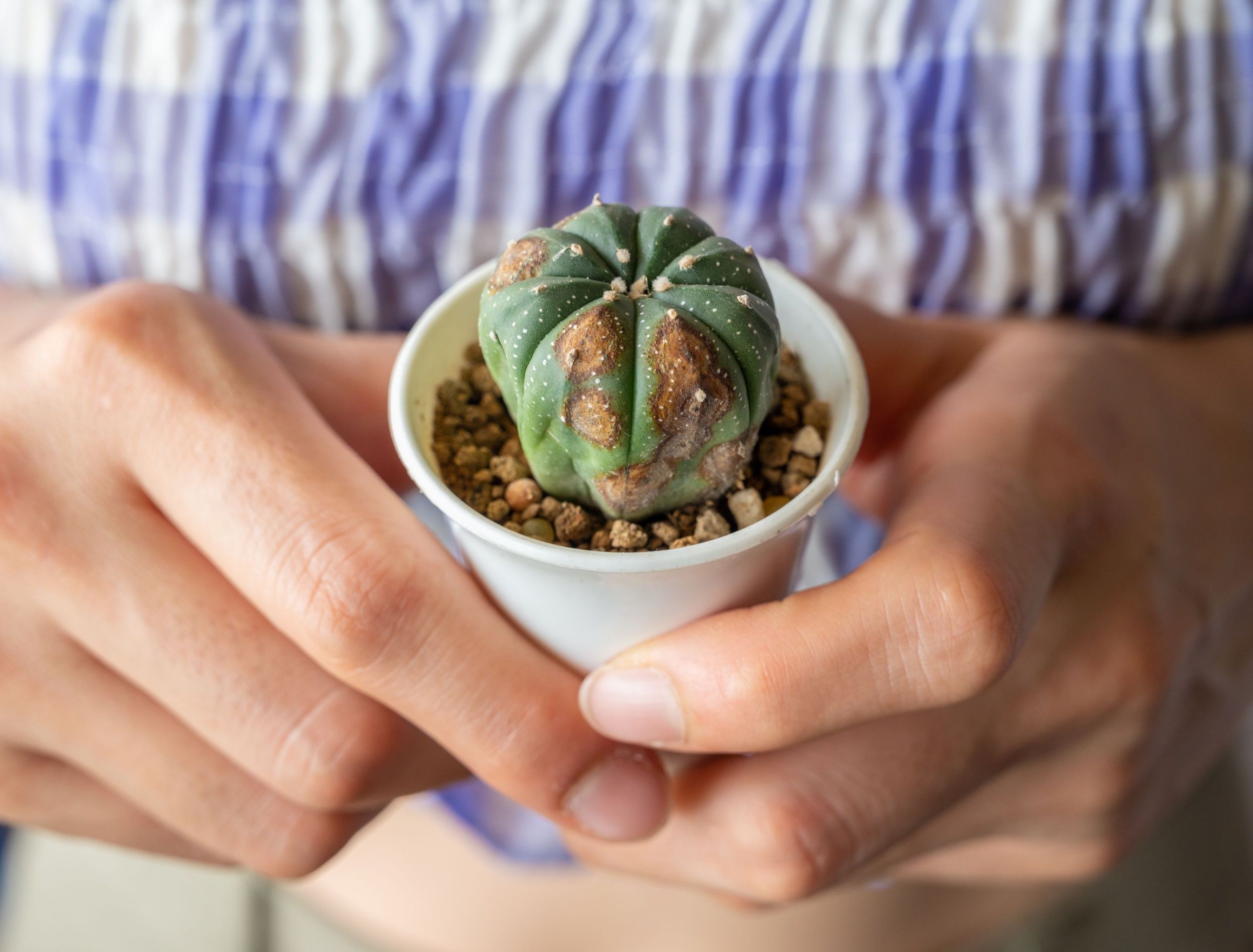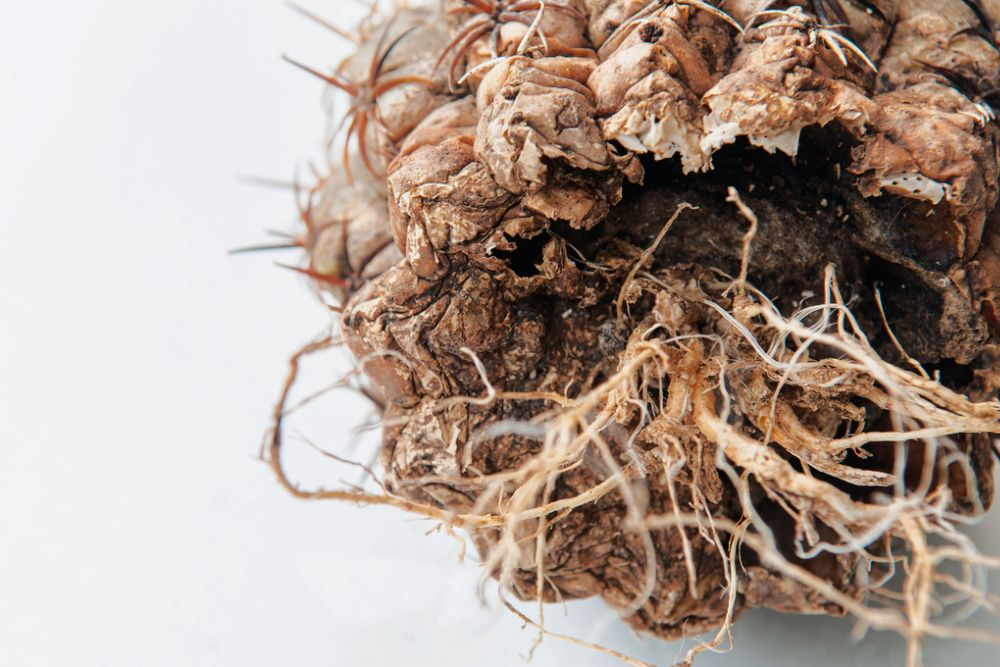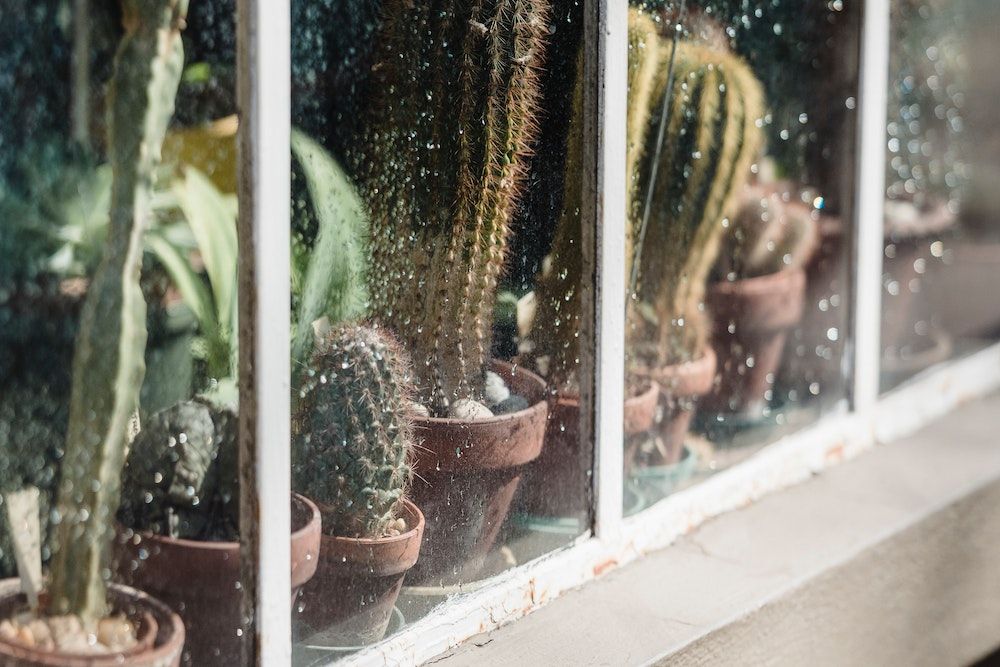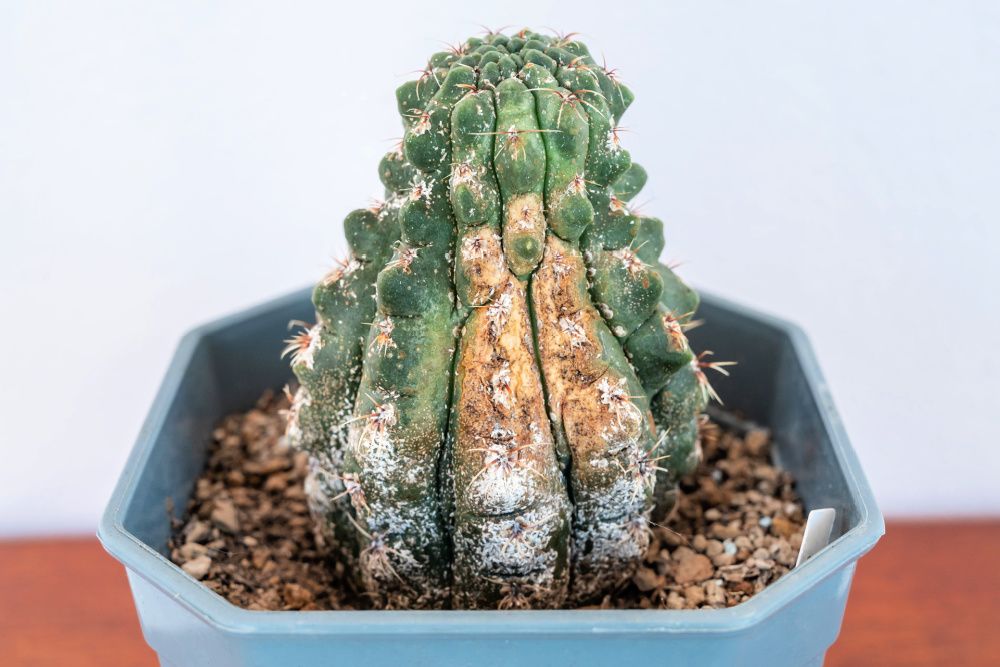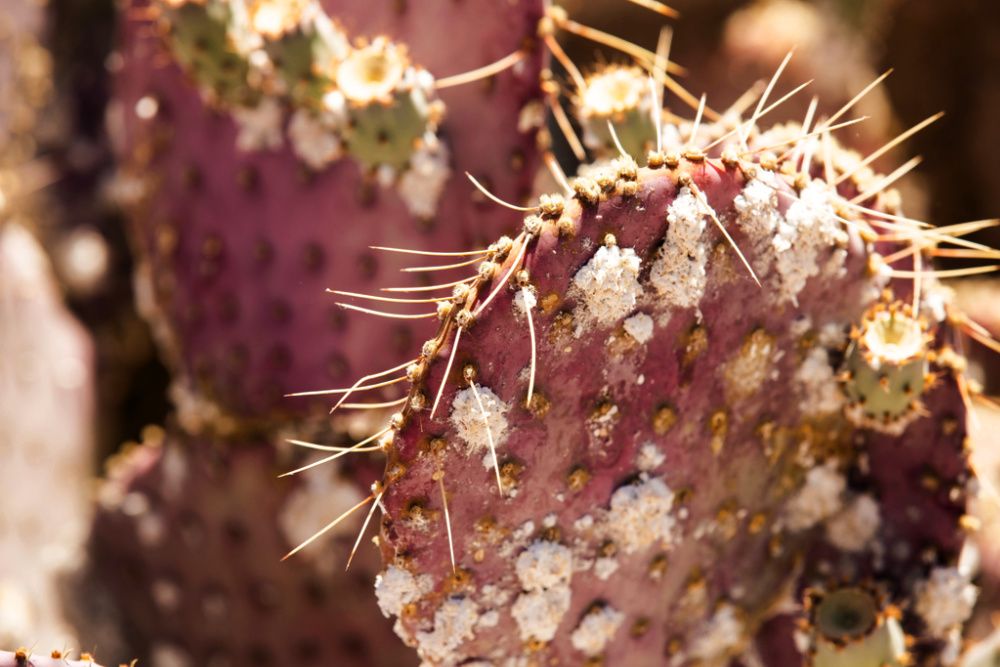As the days get shorter and the periods of warm sunshine decrease, the microclimate you have at home will also change. This shift might mean watering your community of cacti much less and paying close attention to shifts in humidity that can affect your desert-dwelling plants. Unfortunately, these variables can sometimes cause brown spots on your cacti, which require a little detective work to diagnose.
The reasons for brown spots on your cactus can vary greatly, depending on the indoor environment, access to light, and your care routine. However, not all brown spots on your cactus are bad news. It's important to note that brown spots can indicate "corking," which is a natural part of the cactus aging processes and isn't cause for alarm. Here are four of the most common reasons why your cactus might have brown spots.
1. Root Rot
Image credits: PixHound via Shutterstock
If you notice brown spots at the bottom of your cactus that are slowly beginning to spread, root rot is likely the issue. Root rot can occur for several reasons, including overwatering, soil that isn't well-draining enough, and insufficient lighting. As a general rule of thumb, stick your index finger into the soil about 2 inches deep -- if it's dry, your plant needs a drink. On the other hand, if the soil is soggy, your plant might need more sun.
As mentioned above, corking sometimes presents as brown spots at the bottom of the plant. Corking is a natural part of the aging process for your cactus and requires no treatment. It's a change in the plant's epidermis (outer layer) that looks like brown spots paired with the thickening of tissue.
While it looks similar, the difference between corking and root rot is in the texture. Corking looks like firm, bark-like tissue, while root rot is soft and mushy to the touch.
Pro Tip: A funky soil smell is also an indication of root rot.
2. Cold or Sun Damage
Image credit: Blue Bird via Pexels
If you notice orange and brown, rust-like spots on your cactus, it could be because of cold damage or humidity levels that are too high for comfort. During the non-active growth period, your cactus should be in a bright room with temperatures of 40 to 45 degrees Fahrenheit. Aim to keep humidity levels at 30 percent or less.
In the same vein, too much sun can also factor into brown spots appearing on your cactus. While it’s hard to believe that your sun-worshiping plants could actually get too much light, it is possible that subjecting your cacti to high-intensity sunlight can be the cause of brown or black bruises.
3. Pests
Image credits: Boyloso via Shutterstock
If you feel that your cacti are rooted in well-draining soil, aren't being overwatered, and are getting the right amount of sunlight, then the brown spots might be caused by pests. The presence of spider mites or scale could cause brown spots on your cacti.
Specifically for spider mites, the first sign of these tiny invaders is webbing and small brown spots, especially on newer growth. There are many ways to get rid of spider mites, including using insecticidal soap spray on plants. Ensure to quarantine your cactus during treatment until you're sure the mites are gone.
As for scale, they look like tiny brown spots on the plant. Upon a closer look, scale has brown, dome-shaped shells that cling to the plant but can be easily scraped or wiped off. An effective way to eliminate scale is to use cotton swabs and rubbing alcohol to treat the affected areas. Quarantine and repeat treatment until the problem is solved, which might require a bit of patience.
4. Fungi
Image credits: Matt Gush via Shutterstock
Besides insects, other opportunistic organisms to worry about are fungi, which usually affect cacti living in wet soil and highly humid environments.
For example, the fungus Phyllostica, which looks like small spots of brown discoloration, commonly affects the prickly pear cacti (Opuntia species). If left unchecked, fungal infections can spread to other parts of the cactus and eventually to other plants in the vicinity. If any healthy pads on your cactus aren’t affected yet, cut them off, let the ends dry entirely to prevent rot, and then replant in a healthy cactus soil mix.
Sadly, there is no cure for the Phyllostica fungus; if the fungus spreads to the entire plant, the best thing to do is dispose of your infected cactus.
Take Prickly Precautions
There are a handful of reasons why your cactus might have brown spots. They can indicate too much or too little light, cold damage, overwatering, and the presence of pests and fungi. So often, it’s a process of elimination and careful observation to see what might be the culprit.
Do you know of any other reasons a cactus might have brown spots? If so, share them in the comments below!

